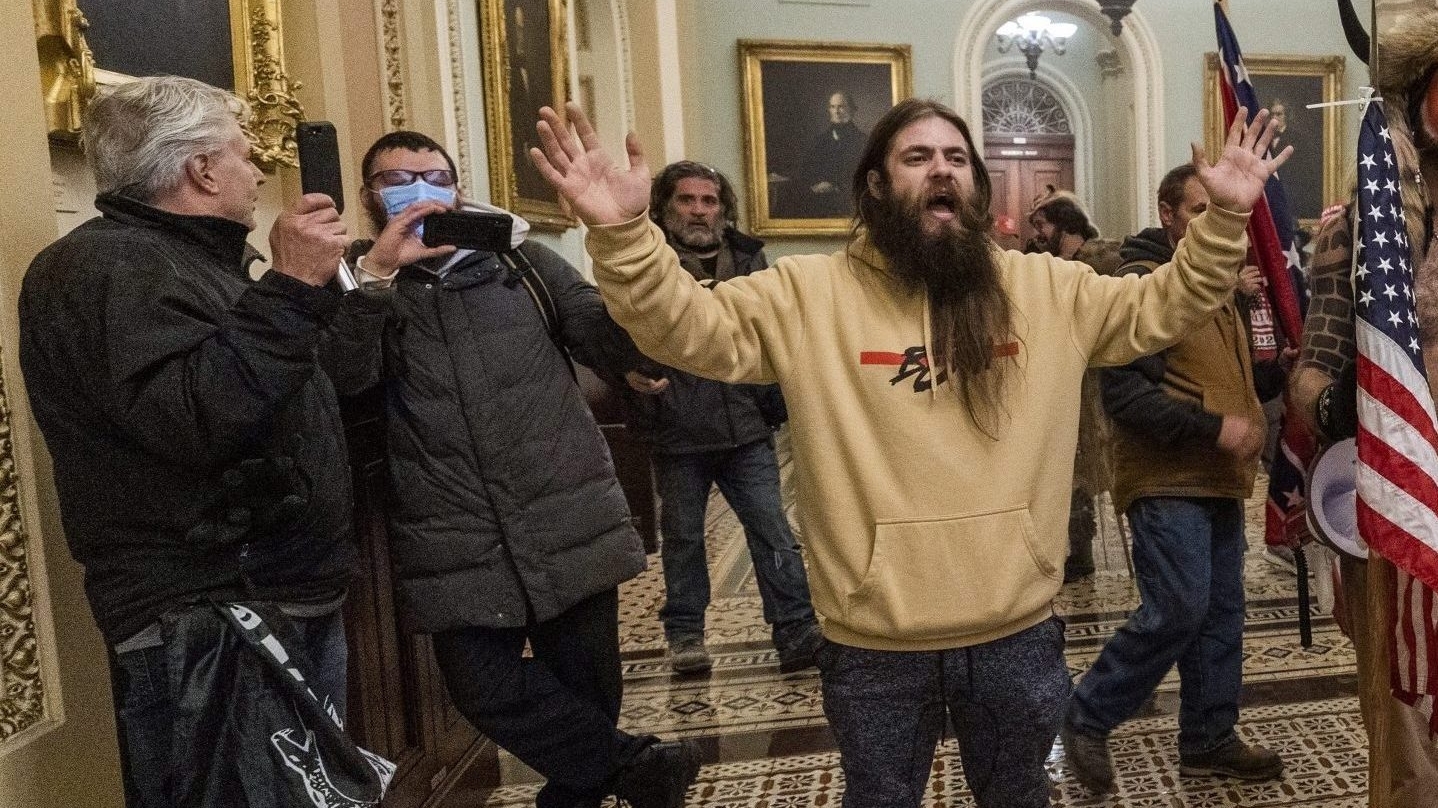An Auburn man who participated in the January 6 insurrection was found guilty of obstruction and entering and remaining in a restricted building or grounds with a dangerous weapon last week, according to the U.S. Department of Justice.
William Watson, a 25-year-old man living in Auburn, previously identified by APR as being present at the U.S. Capitol during the attempted insurrection, was arrested by federal and local authorities less than a week after traveling to Washington D.C to participate in the breach of Congress.
He faces a maximum of 20 years in prison on the obstruction charge, as well as a maximum of 10 years in prison for entering and remaining in a restricted building or grounds with a dangerous weapon, according to the Justice Department.
Watson had jumped bail on narcotics-related charges to be present at the U.S. Capitol on Jan. 6. Originally, Watson also faced federal charges of civil disorder and violent entry or disorderly conduct, according to the criminal complaint filed in D.C. district court.
As Trump supporters advanced up the Capitol steps, Watson was “among the first rioters to enter the building” that afternoon, according to a statement from the Justice Department.
“On Jan. 6, 2021, Watson was among a mob of rioters illegally on the Capitol grounds,” the Justice Department wrote in a statement released following the verdict last week. “He had a pocketknife on his waistband, which he used to tear down cloth around the inauguration scaffolding so that the crowd could move further up the steps toward the Capitol Building. Just after 2 p.m., the police line was overrun by rioters. Watson, along with others, stormed up the Capitol steps and across the Upper West Terrace towards the Senate Wing Doors.”
Entering through a partially broken windowpane, Watson jumped into the Capitol Building with a canister of chemical spray, identified as mace by a criminal complaint filed in D.C. district court last year, and eventually arrived in the Ohio Clock Corridor near the U.S. Senate Chambers with a group of other rioters.
The photo showing Watson standing next to Jake Angeli, better known as the QAnon Shaman, was used by Republican policymakers to suggest that the leftist-group Antifa had been a part of the Capitol Breach due to a tattoo on Watson’s left hand that was misidentified as a hammer and sickle. The tattoo was, in fact, a reference to the video game Dishonored.
The U.S. Attorney’s Office for the District of Columbia and the Department of Justice National Security Division’s Counterterrorism Section are continuing to prosecute the case with assistance from the U.S. Attorney’s Office for the Middle District of Alabama.
A sentence will be handed down in March of next year.
According to the Justice Department, almost 900 individuals have been arrested for crimes related to the Jan. 6 insurrection.





















































